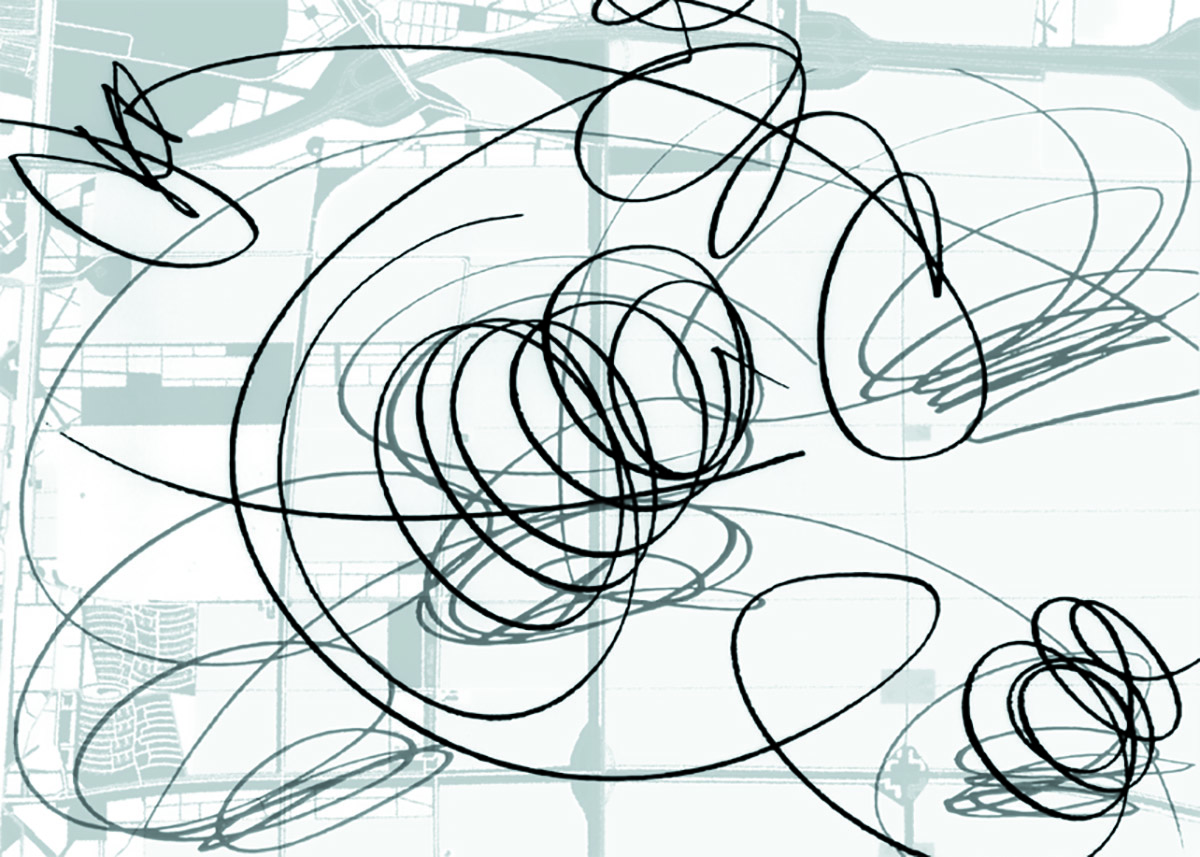
Intuition and Logic
In the Polynuclear Landscape two main actors perform the evolution game. Actor 1 is Database, a grid of 320 estates acting out the real-time input device of fresh data feeding the development of the landscape. Actor 2 is Intuition, represented by the intuitively drawn lines of development. Step-by-step the two actor’s intertwine. They develop in themselves and influence each other to form increasingly complex rules for the landscape game: the game of Intuition and Logic in the Polynuclear Landscape for Almere-East.
Displacement
A number of different polynuclear sketches form the genetic material for the lines of development in the landscape. One of theses sketches displaces the horizontally stretched surface of the polder, which reacts like a latex membrane being impressed with a spiral. As a result of the displacement a spiraling chain of hills reaches up as high as 30 m. It feels as if the syrupy polder soup has been stirred by a giant spoon in circular movements, describing the trajectory of the polynuclear sketch. The concept for a Polynuclear Landscape assumes a ground balance. This implies that the same volume which constitutes the hills must be dug of the polder to form deep lakes, more or less parallel to the chains of hills.
Non-stop Park
A second sketch supplies the course for the non-stop park. A cultivated park zone follows the sketch’s track over the hills and through the lakes. This track connects nearly all the estates to each other, and provides wanderers with extensive possibilities for exploring all the public areas of the 320 estates. One could spend days in this area without repeating one’s moves. Each estate will develop its own character since each estate has a private owner. And no landlord will be allowed to own more than one estate in a row.
Programmable Street Lights
The third strategy of lines of development works on another dimension. All the street lights are executed as dimmable light fixtures and will be programmed to morph from one configuration to the next. These lines of development are continuously changing shape and position. In effect this strategy is experienced as surges of light raging over the embossed landscape.

Crystallisation
A rule is introduced allowing sections of the hills to be replaced by the buildings. Building may not add volume to the hills, building may not exceed the volumetric envelop of the hill. The game is to replace nature with culture. And when submitting oneself to the rules of this game, there are virtually no limits other than the relation of the volume of the hills themselves to the volume of additional built substance. Estates containing relief will become more valuable than flat ones. New economic fields of tension arise around and through the chains of hills. Because the buildings are fused into the landscape in this way, the new townscape will develop as step-by-step crystallization of the folded earth. By simply fusing some clear strategies, the establishing of the 320 estates, the vehement stirring of the polder, and the crystallization of the volume of the hills, set in motion a wide variation in use without disturbing the big picture. Each new crystallisation will strengthen the concept, and eventually materialize the original sketch.
Design team: Ilona Lénárd [generative sketch], Kas Oosterhuis, Oscar Rommens | De Paviljoens Almere | commissioned by Lia Gieling | 1998